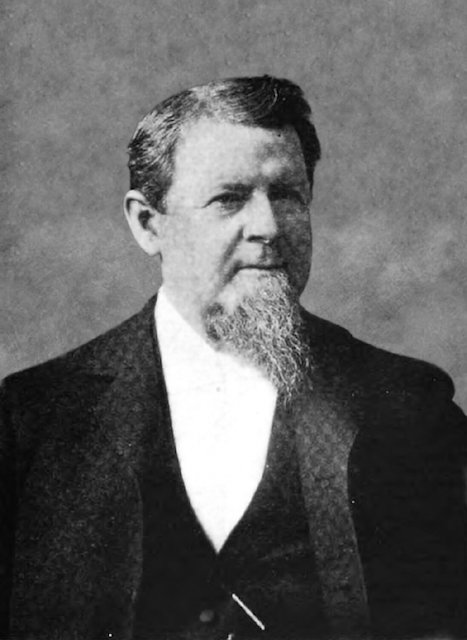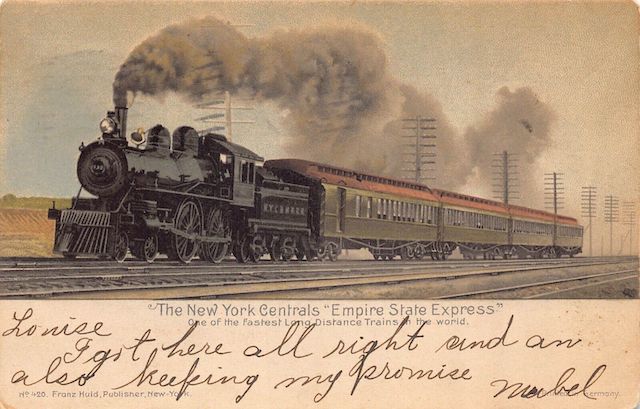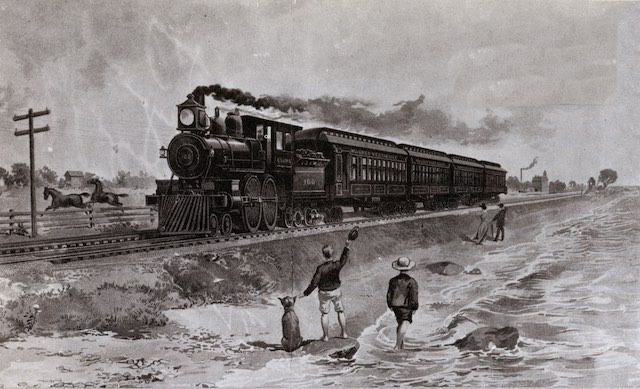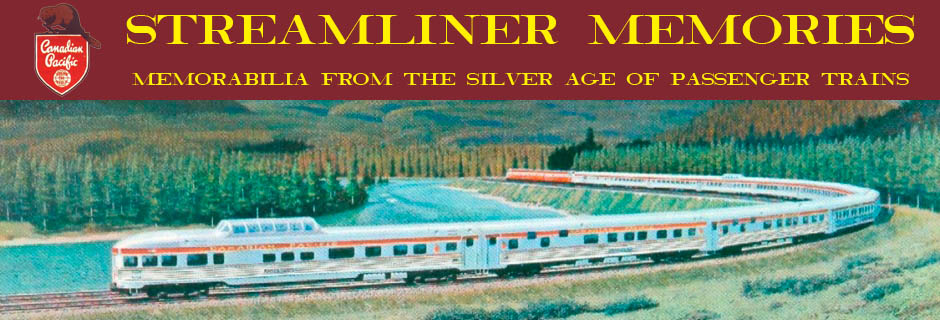The World’s Columbian Exposition promised to bring millions of people into Chicago in the summer of 1893, and the nation’s railroads were eager to capture as many of those travelers as possible. No railroad did a better job than the New York Central thanks to its general passenger agent at the time, George Henry Daniels, who has become known as a “prophet” in the advertising industry for the many ways in which he promoted the railroad’s business.
 Among other things, George H. Daniels, shown here in around 1890, was one of the first to publish travel brochures, similar to those presented here, to encourage people to ride trains on their vacations. Click image for a larger view.
Among other things, George H. Daniels, shown here in around 1890, was one of the first to publish travel brochures, similar to those presented here, to encourage people to ride trains on their vacations. Click image for a larger view.
In 1881, the Pennsylvania Railroad had stolen a march on the New York Central when it introduced the world’s first “limited” train, the New York and Chicago Limited. When most trains took more than 36 hours to get between New York and Chicago, and the fastest took more than 30, James Wood, Pennsylvania’s passenger traffic manager, conceived of a train that would take under 26 hours, carry nothing but Pullmans, and charge an extra fare for the privilege of saving several hours. The New York Central and its subsidiary, the Lake Shore and Michigan Southern, responded with a train unoriginally called the Limited Express (and later even more unoriginally called the New York and Chicago Limited) that wasn’t able to go quite as fast as Pennsylvania’s train.
The balance between the two competitors tilted when Daniels became the Central’s passenger agent in 1889, a job he would hold until 1905. Prior to the Chicago fair, Daniels started a new fast train in 1891 that would go between New York City and Buffalo in 8-2/3 hours, saving an hour over the previous fastest train on that route. Over 440 miles, this was an average speed of nearly 51 miles per hour, making it the fastest long-distance train in the country. He called it the Empire State Express.

This postcard, which is postmarked 1904 but is probably based on an earlier photo, shows the Empire State Express on a typical day after the Columbian Exposition. The locomotive is number 938, a 4-4-0 built in 1896 with 78″ drivers that produced about 17,000 pounds of tractive effort.
By the time of the Chicago fair, the fastest New York Central and Pennsylvania trains between New York and Chicago took more than 24 hours. For the expo, Daniels conceived of the Exposition Flyer, an all-sleeping-car train that would take only 20 hours between the nation’s first- and second-largest cities. At an average speed of 49 miles per hour, it wasn’t quite as fast as the Empire State Express, but it went more than twice the distance.
The Exposition Flyer‘s cars were manufactured by the Wagner Palace Car Company, a competitor of Pullman’s that was owned by a relative of the Vanderbilt family. The train normally included a “buffet smoking and library car,” two or three sleeping cars, and a dining car. Unlike the New York and Chicago Limited, which dropped off and picked up cars in Buffalo and Albany along the way and only carried a dining car for part of the route, the Exposition Flyer was a “solid train,” meaning all of its cars went the entire distance. In fact, to save time, it didn’t even stop in Buffalo and made only seven stops between New York and Chicago, mainly to service the train and locomotive.
To power its passenger trains, the New York Central had a large fleet of 4-4-0 locomotives, some of which were brand new in 1893. Most of them were made by Schenectady Locomotive Works (a predecessor of Alco) and typically had 18″x24″ pistons, 180 pounds of boiler pressure, 69″ driving wheels, and were rated to produce 17,242 pounds of tractive effort.
For its fastest trains, however, the Lake Shore & Michigan Southern (which operated the portion of the route between Buffalo and Chicago) had five locomotives with 72″ driving wheels. Made by Brooks (another Alco forerunner), these had 17″x24″ pistons and 180 pounds of boiler pressure, resulting in a tractive effort of only 14,739 pounds. However, that was no problem since the Expo Flyer was normally no more than five cars long.
 This image of the Exposition Flyer is from Lucius Beebe’s book, 20th Century. The picture shows locomotive 160, one of the Brooks locomotives with 72″ drivers. The first car was the buffet-library car, followed by a dining car and two sleeping cars.
This image of the Exposition Flyer is from Lucius Beebe’s book, 20th Century. The picture shows locomotive 160, one of the Brooks locomotives with 72″ drivers. The first car was the buffet-library car, followed by a dining car and two sleeping cars.
East of Buffalo, the New York Central had some older locomotives with 70″ drivers, but it probably dedicated the newest locomotives to its premiere train and should have been able to maintain its share of the 20-hour schedule using locomotives with 69″ drivers.
According to a New York Times article transcribed in Beebe’s book on the 20th Century Limited, the Exposition Flyer‘s first run out of Grand Central Station was powered by locomotive 870, which — the article says — was “one of the largest and most powerful yet built.” This presents a puzzle, however, since according to SteamLocomotive.com, 870 was built in 1896. It had 78″ drivers for high speeds, but — far from being one of the most powerful locomotives — it developed about 17,000 pounds of tractive effort, about the same as most NYC American-style locos that built around 1893 and were probably used to pull the Flyer. It seems more likely that New York Central used one of its 69″-drivered locomotives for the Flyer.
